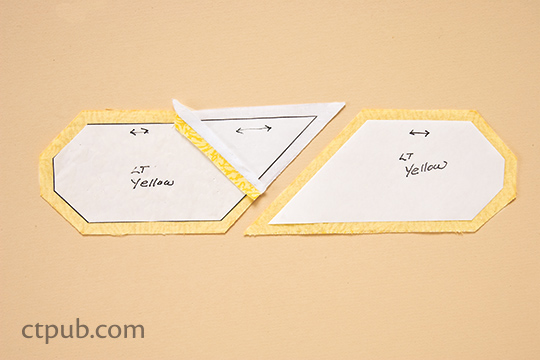How To: Single Foundation Piecing (with Free Project!)
Posted by Jane Hall & Dixie Haywood on Jul 1st 2016
Curious about different kinds of foundation piecing? You're in luck! This free project from Every Quilter's Foundation Piecing Reference Tool teaches the basics of single foundation piecing while creating a beautiful Pansy block.
Single foundation piecing is a direct descendant of English paper piecing, in which each patch of fabric in the block has its own template or foundation. Instead of hand basting fabric to paper shapes, use freezer paper and iron the shapes to the wrong side of fabric. You can piece by hand or machine to stitch the patches together along the edge of the templates.
Sample Block: The Pansy
The Pansy is an example of one of the pieced flower/animal designs that is made more accessible with this technique. Although some portions of the block could be made using under pressed piecing, it is just as easy to use single foundations for the entire block, with the added benefit of controlling seam allowance directions.
1. Draw the pattern on the dull side of freezer paper. Code the pieces, marking the grainline and color choices on the foundation.

Pansy block with grainline marked
2. Cut the foundation apart on the lines and press the pieces onto the wrong side of the fabrics. Cut out the shapes, adding 1/4˝ seam allowance on all sides.

Press foundations onto fabric and cut out shapes
Tip: Draw an extra pattern to use as a reference. Either mark the coding on it or pin the prepared foundations to it as a construction aid.
3. Reassemble the pattern, matching the cut edges of the freezer paper as you pin pieces together. Aim for long straight seams, although set-in seams can be sewn in two steps, stopping and starting at the end of each seam. Press seams open.

Assemble the pieces
Tip: Do not stitch across seamlines where there is an inset seam. Insert the sewing machine needle at the exact beginning of the sewing line, backstitching at both ends of the seam.

Finished block
This technique is often used for pictorial blocks, as well as for patterns containing hexagons and diamonds. It is also frequently found in combination with pressed piecing in blocks that cannot be completely press pieced.







